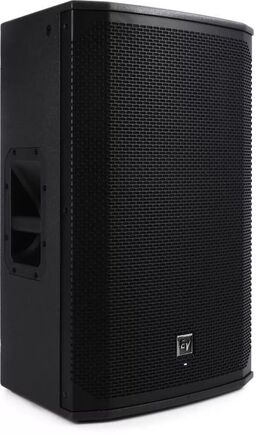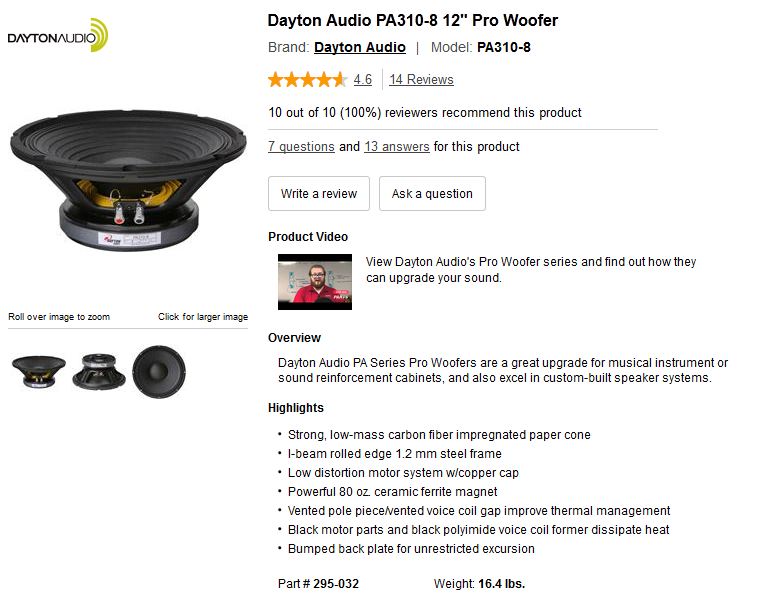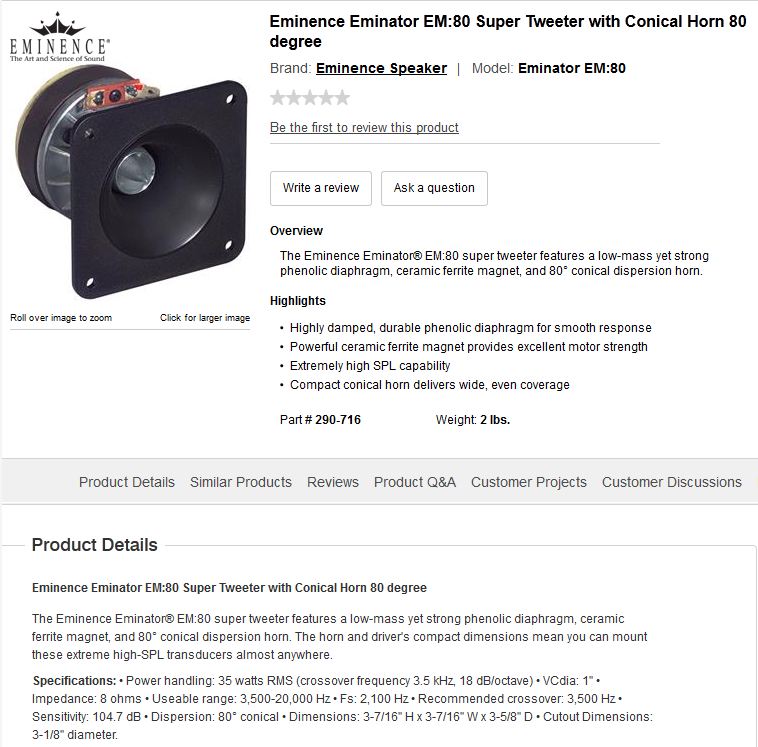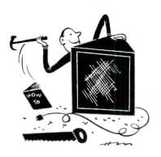BUYING GUIDE - SPEAKERS
There are several really great speaker manufacturers out there. This type of purchase REALLY is dependent on your individual needs; which would include your audience, your room, your other gear, your vision of what you want to achieve, and your budget. With that said, I'm going to just make a raw list for you of the most respectable speaker manufacturers, and the general use of some of their products. From there, you'll need contact someone (like me) to go over with you what your needs are. You can also post a question in our Members Forum regarding this.
Here are some legit companies (in no particular order):
Here are some legit companies (in no particular order):
- EAW
- Meyer Sound
- Electro-Voice
- JBL
- QSC
- L-Acoustics
- Yorkville
- Mackie
- Presonus/Worx
- Yamaha
- Turbo Sound
- D&B
- Adamson
- Peavey
- Clair Brothers
- Bag End
- FBT
- Danley
I am sure I have missed a few. If you think of any I have missed, just shoot me a message under the contact tab. Thanks!
WHAT TO BUY FOR A YOUTH ROOM OR SMALLER CONGREGATION
|
When considering what to buy regarding speakers for a youth room or smaller church, always make room to grow, and for multiple purposes (like outside outreaches where you'll typically need more power). I'll make this simple: Just about anything in EV's powered/active line would be great. Get together with an integrator to match your system with the room/space. My second choice would be the QSC K Series Powered Loudspeakers - At least a QSC K12 or K15. Many engineers love to hate the K series, but in reality, they are total workhorses that sound just fine. Then, I would add some Yorkville PS15s or the PS18s for the 18" version- This is a GREAT powered subwoofer! Usually one is more than enough to handle most youth rooms, but 2 would be great for a larger space. Notice the pole mounts on the top of this sub. That means you can mount the mains directly on each sub and save space by not having to purchase a speaker stand. I first came in contact with Yorkville subwoofers many years ago when I tried out an LS801p. It was by far the best in its class for medium-priced subwoofers. |
Improving Your Speaker Situation on a Very Tight Budget
If your speakers are 20+ years old, it may be a really good time to upgrade, but if your church is on a really tight budget, and you just can't afford it, there is a work around. Let me give you an example: About 6 months ago I was working with a smaller church in Louisiana. Their youth department has a pair of old Peavey speakers that are over 30 years old. Not all 30 year old speakers sound terrible, but these REALLY did. They were beyond terrible. My task was to upgrade their mains for an insanely low budget. I know their situation. Their budget isn't going to increase anytime soon. So, I took what they had, and let them borrow some old JBL's in the mean time.
1. The speaker cabinet had a model number on it. I called Peavey just for curiosity sake, and they told me they didn't even have any information on that cabinet anymore!
2. The cabinet featured a 12" speaker and a super cheap piezo tweeter. No crossover of course. Just an old capacitor.
3. I did some measurements on the cabinet to see the internal dimensions to get a close number on the volume of the cabinet, and the internal clearance to see what I could do in way of a new 12" speaker & tweeter.
4. From there, I contacted a company called Parts Express. These guys offer great replacement speakers for very fair prices. They can be found at www.parts-express.com - And no, I am not affiliated with them. They just have really good customer service, and I have been a satisfied customer of theirs for years.
5. Their youth department at that church runs an all-in-one mixer-amplifier, and I knew that their particular model doesn't support under 4 ohms on each output channel. So from there, I knew the total ohm load I would have to work with in re-building their speakers. Remember, if you combine two 8 ohm speakers on one output, the combined ohm load is 4 ohms! That's right, not 16, but 4! If you combine two 16 ohm speakers on one output, the amplifier will then see 8 ohms altogether! Keep this in mind when building or rebuilding new speakers.
1. The speaker cabinet had a model number on it. I called Peavey just for curiosity sake, and they told me they didn't even have any information on that cabinet anymore!
2. The cabinet featured a 12" speaker and a super cheap piezo tweeter. No crossover of course. Just an old capacitor.
3. I did some measurements on the cabinet to see the internal dimensions to get a close number on the volume of the cabinet, and the internal clearance to see what I could do in way of a new 12" speaker & tweeter.
4. From there, I contacted a company called Parts Express. These guys offer great replacement speakers for very fair prices. They can be found at www.parts-express.com - And no, I am not affiliated with them. They just have really good customer service, and I have been a satisfied customer of theirs for years.
5. Their youth department at that church runs an all-in-one mixer-amplifier, and I knew that their particular model doesn't support under 4 ohms on each output channel. So from there, I knew the total ohm load I would have to work with in re-building their speakers. Remember, if you combine two 8 ohm speakers on one output, the combined ohm load is 4 ohms! That's right, not 16, but 4! If you combine two 16 ohm speakers on one output, the amplifier will then see 8 ohms altogether! Keep this in mind when building or rebuilding new speakers.
6. I then chose a decently priced crossover (also available at parts express) with a common crossover point. A crossover separates treble from bass so that bass doesn't go to the tweeter, and treble doesn't go to the woofer. With that said, tweeters and woofers have what they call a frequency response. So, you have to match the woofer and tweeter to where they will work together with the crossover. You want to try and choose a woofer that extends up to (frequency wise), where the tweeter picks up at. Needs are diverse, so don't go out and buy this exact one, but this is an example of what to look for:
|
7. Figure 1: If your cabinet you are rebuilding has 2 speakers - a woofer and a tweeter, then you need to get a 2 way crossover. 3 speakers - A woofer, mid-range driver, & a tweeter, then a 3 way crossover.
8. Look at the crossover point. Make sure you can find speakers that will work for this crossover frequency. 9. Make sure that the crossover can handle the amount of wattage the amplifier will potentially feed it. 10. Lastly, look at the reviews. Make sure people like this crossover, and that it has done a great job for them. 12. Figure 2: Try to find a woofer that will fit in the box you are trying to put it in. Make sure the height of the speaker will fit the cabinet, and that it wont "bottom out." Make sure you look at the woofer's frequency response. Figure 3: For the above crossover, you'd select a woofer that would extend up to 3500 Hz. Dayton makes a decent 12" woofer that sounds great, and it'll do just that. It's the PA310-8. Remember, this is just an example, but will work fine is a real-world situation. 13. Figure 4: Try to find a tweeter that will fit in the original hole, because if not, you'll need to cut the old hole in your box to fit the new tweeter. Make sure the tweeter will extend down to at least 3500 Hz. Make sure you don't make the mistake of purchasing a mid-driver, and that the frequency response would go from the crossover point up to around 20 Khz. Note: This is the particular tweeter I used for their box, but check to see what type of tweeter you will need for your situation. Selenium makes really great tweeter horn drivers for a fair price if that's what your box calls for. One of my favorites is the Selenium D250-X. 14. Now just hook up the speakers and the input from the box as labeled on the crossover. 15. Test it. After I upgraded their old speakers, they sounded AWESOME! Now, When you walk into their youth room, it sounds great - and we did it under budget! |
**Just So You Know - I am not in any way affiliated with any companies mentioned. My selections on what the best gear is, is from direct personal experience with said items. I have nothing to gain by recommending any piece of gear, other than the piece of mind knowing you'll be getting reliable stuff that works.
|
|







